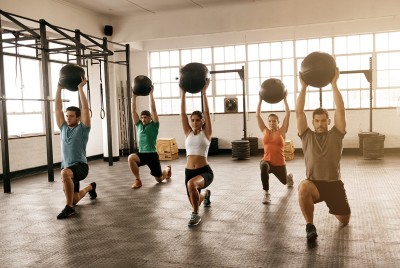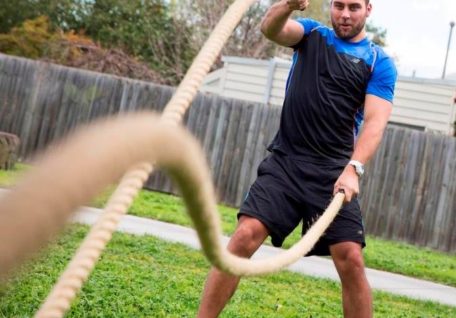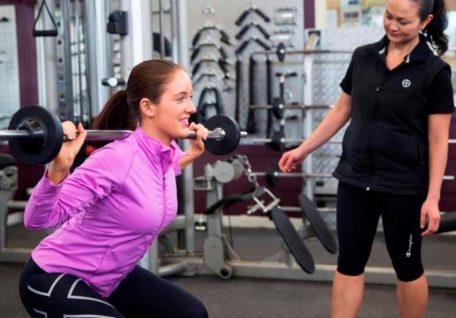The New Year is here, and with that fitness professionals and enthusiasts alike are anticipating what the top fitness trends will be for the year ahead.
To help plan for what’s to come, The American College of Sports Medicine (ACSM) have surveyed thousands of fitness professionals about health and fitness trends via an electronic questionnaire. The results have helped to make up their annual list of fitness trends that are predicted to emerge throughout the world in 2019.
Let’s take a look at the Top 10:
1. Wearable Technology
This includes everything from fitness trackers, smart watches, heart rate monitors, and GPS tracking devices. Examples include fitness and activity trackers like those made by Misfit, Garmin, and Apple. These devices can track heart rate, calories, sitting time, distance, steps and much more. Wearable technology first appeared as a fitness trend in 2016. It was the #1 trend in 2016 and 2017 before dropping to #3 for 2018. With technology only set to improve, you would expect to see this at the top end of these types of lists for many years to come.
2. Group Training
Group Training has been classified as having more than five participants and includes many types of classes, including cardio-based classes, indoor cycling, dance-based classes, step classes and boot camps. Group classes are designed to be effective, motivational sessions for different fitness levels with instructors having leadership techniques that help individuals in their class achieve fitness goals. Group training as a trend has continued to rise, with it appearing at #6 in 2017 and #2 in last year’s survey.
3. High Intensity Interval Training (HIIT)
These exercise programs typically involve short bursts of high-intensity bouts of exercise followed by a short period of rest and recovery. The popularity of this form of exercise is most likely due to the maximal health benefits gained in minimal time, with workouts typically ranging from 10 to 30 minutes in duration. HIIT has been in the top five every year since 2014.
4. Fitness Programs for Older Adults
This is a trend that emphasises and caters to the fitness needs of the Baby Boom and older generations. People are living longer, working longer and staying active for longer, so there is a big market for having fitness programs that target this age bracket. This trend has risen from #11 in 2017 and #9 in 2018.
5. Body-weight Training
This type of training has become increasingly popular over the years as it requires minimal equipment, making it a convenient and inexpensive way to train effectively.
6. Employing Certified Fitness Professionals
As the fitness industry grows, there’s an increased importance and emphasis on hiring certified professionals. ACSM predicts that the industry will continue prioritising hiring professionals that have been accredited through “educational programs and certification programs that are fully accredited for health/fitness professionals.”
7. Yoga
While yoga has featured on this list for a number of years, different forms of yoga such as Power Yoga, Yogilates and yoga in hot environments have been recognised as growing trends for this year.
8. Personal Training
Defined by ACSM, Personal training includes fitness testing and goal setting with a trainer and working one on one with a client to prescribe workouts specific to each client’s individual needs and goals. Since this survey first began in 2006, Personal Training has featured in the top 10, highlighting its importance within the fitness industry.
9. Functional Fitness Training
This trend involves using strength training and other activities/movements to improve balance, coordination, strength, and endurance to improve activities of daily living. This trend ties in with #4 on the list and the aging population we have, with fitness being recognised as an important way to help maintain daily functions.
10. Exercise is Medicine
Rounding out the top 10, Exercise is Medicine. A concept that encourages health care providers to include physical activity assessment and related treatments as part of patient visits, as well as referring patients to exercise professionals. After coming in at #12 in 2018, it has snuck into the top 10 for 2019.
So, what to do with this information?
If you are already a qualified Personal Trainer:
- Use this information when writing programs for your clients – Everyone loves to be doing what is ‘trendy’, so if you are offering training methods that are in, people will come to you and stick with you.
- With an older adult market, there are definitely opportunities that you can use to grow your business. Older adults tend to have higher disposable incomes and they are looking for fitness professionals to help them stay active and maintain daily functions.
- Value the knowledge and skills you have – people are on the lookout for qualified professionals to help them meet their health and fitness goals.
If you aren’t yet qualified:
- Get qualified, and choose a demographic from above to target. Enrol onto our Cert III & IV in Fitness and take advantage of the continuously growing fitness industry








